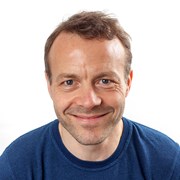Multicrystalline silicon is the technology with the highest potential for enabling widespread deployment of photovoltaic energy generation through low cost and high productivity. Introducing diamond sawing for multicrystalline silicon wafering is, however, essential to meet the ever-increasing demand on lower cost and higher efficiency. To achieve this, two main challenges need to be solved; 1) yield and 2) surface texturation and passivation.
There is no established understanding of the fundamental mechanisms operating during diamond sawing today. This project aims to explain the mechanisms operating during scratching, such as phase transformations, initiation and propagation of microcracks and chipping, and how they will vary with crystallographic- and mechanical parameters. Furthermore, this understanding on microscopical scale needs to be translated into parameters that can be feed into a global model for a multi wire saw to be able to optimize the process for speed and reduced breakage. The as-cut wafer surface will be treated to remove saw damages and to create a surface texture which is optimized for light absorption (black silicon) and the subsequently passivation which is absolutely crucial to meet today's quality demand for high efficiency solar cell concepts.
We aim to develop an etching procedure tailored for diamond sawn high performance multicrystalline silicon wafer surfaces. Lastly we will do a proof of concept test where diamond sawn multicrystalline wafers with DiaMApp-surface are processed in a high efficiency solar cell line. The project contains 3 WPs: WP1: Wafer sawing WP2: Texturisation WP4: Proof of concept.
SINTEF and NTNU are collaborating on the project, which is a research project funded by the Research Council of Norway.
Project leader for NTNU: Gabriella Tranell


